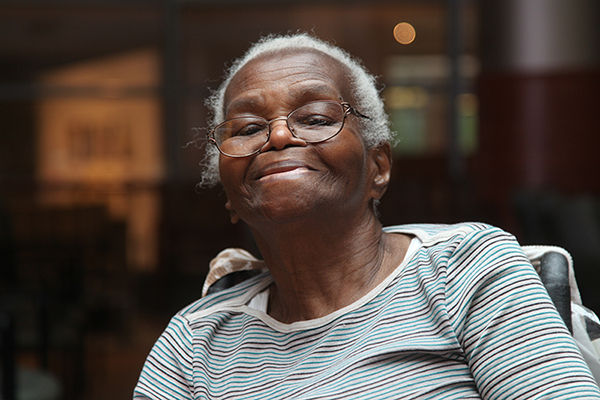WHAT WE'RE LEARNING
Dear Colleagues—
Identifying and creating treatment plans that reflect what matters to older adults and their families is a foundational element of age-friendly care. It requires open and honest conversations in which people feel safe, heard, and in control. For many older adults with complex, chronic conditions, the most effective setting for these conversations is inside their own homes. Such an approach—quite literally—meets them where they are.
Home-bound older adults are among the most frail and vulnerable people. They often need primary care the most, yet are least likely to get it. Because they are less likely to receive regular preventive primary care, they are more likely to end up in emergency rooms. Nursing home admissions often follow, which could have been avoided if primary care was more easily accessible. Consequently, home-bound older adults are one of the costliest populations for Medicare, despite constituting only 5.6 percent of Medicare enrollees.
Because we believe so strongly about providing care to the most vulnerable older adults in their own homes, The John A. Hartford Foundation has funded several projects to increase access to, and refine, this age-friendly care model. Although it can take different forms, at its core, home-based primary care is coordinated, collaborative care where doctors, nurse practitioners and RNs, physician assistants, social workers, pharmacists, and other relevant specialists visit home-bound older adults. These teams proactively treat issues that may have otherwise resulted in emergency room visits or nursing home admissions. They create care plans that reflect the older adults’ circumstances, identify what matters, and support the needs of family caregivers. When they visit, clinicians can identify safety, hygiene, nutritional, and environmental issues that they may otherwise have missed. Older adults remain in familiar surroundings and tend to feel a greater sense of comfort and independence during visits with their care team, making it easier to clearly establish what matters to them and tailor care to align with their goals.
In addition to honoring what matters to older adults, we’re adding to the evidence showing that home-based primary care improves health outcomes while dramatically reducing costs of care. The John A. Hartford Foundation started funding home-based care projects more than 20 years ago, seeding the knowledge base about how to provide home-based primary care and ensure its quality. Those early investments paid off by informing the establishment of Independence at Home, a primary care demonstration project involving 10,000 people funded by the Centers for Medicare and Medicaid Services (CMS). The model impressively saved more than $49 million in its first three years. In addition to reducing unnecessary hospitalizations, it also showed how providers can even provide x-rays, EKGs, and other tests in the home, rather than needing to schedule in-office follow up appointments. The success and efficacy of the demonstration project led CMS to include home-based primary care in its newly released payment models around primary care, a clear endorsement of the model—one that we are excited to say will bring age-friendly care to many vulnerable older adults.
Home-based primary care is a clear win for payers, providers, and patients—and family caregivers benefit as well. Providers making home visits can offer caregivers positive reinforcement, conduct hands-on demonstrations of care tasks, and provide them with breaks from their caregiving duties. This is increasingly important as the number of caregivers providing complex care at home rises. The presence of a dedicated caregiver is the single most important factor that determines whether a patient can remain at home or be admitted to a care facility. By aiding caregivers, home-based primary care teams ultimately help ensure older adults get to do what matters most to them: stay in their own homes.
Not only does home-based primary care better reflect what matters, but thanks to CMS’ demonstration, we’re learning more about how it increases quality while decreasing costs. The result is better care that keeps our most vulnerable older adults out of emergency rooms, hospital beds, and skilled nursing facilities, and allows people to stay exactly where they want to be… home.
That’s age-friendly care.
Sincerely,
Amy Berman, RN, LHD, FAAN
Senior Program Officer, The John A. Hartford Foundation

